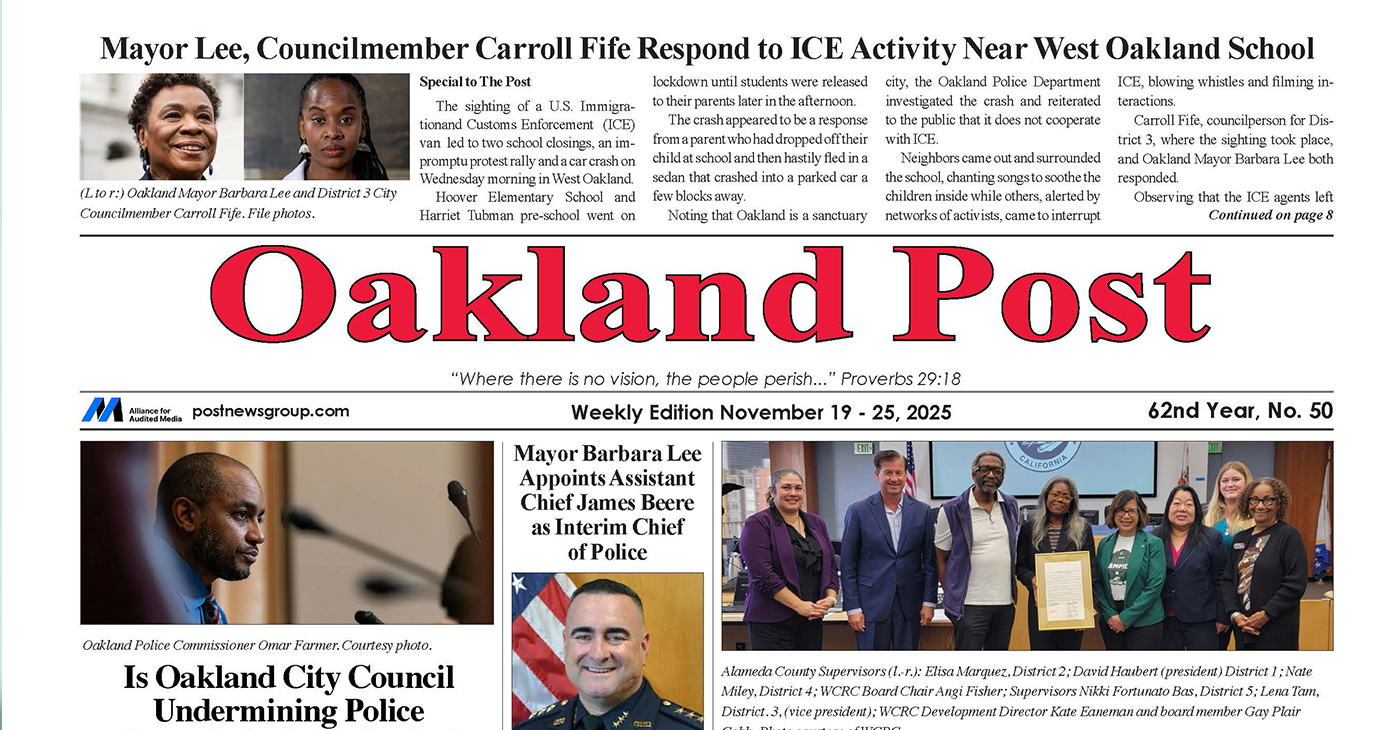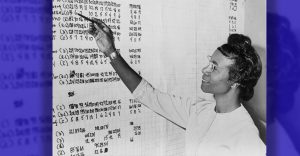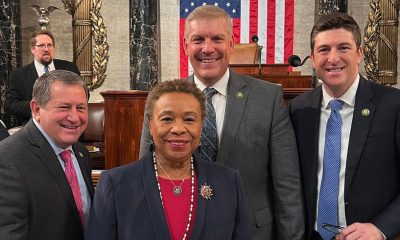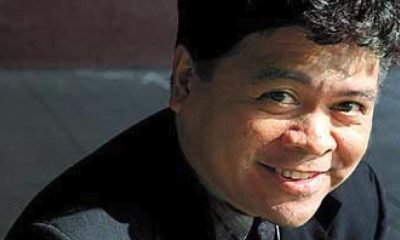Bay Area
OPINION – Will The 2020 Census Change the Course of History for the Black Community?

Every 10 years, the U.S. Census Bureau works to conduct an accurate count of the nation’s population, as provided for under the U.S. Constitution. This decennial count – which is currently underway – is one of our nation’s most inclusive civic activities, including every person living in the country, regardless of age, race, ethnicity, religion or citizenship.
An accurate count is essential to our democracy and our community’s growth because the data helps determine how much federal funding and political representation each state and community receives.
Census results are used to determine political seats and draw district lines for all levels of government and to allocate hundreds of billions of dollars in federal spending nationwide for critical community resources like parks, infrastructure, health care, and support programs in education, housing grants and nutrition.
African Americans have been systematically undercounted from the very first census, disadvantaging Black communities and neighborhoods, and silencing our voices. An inaccurate census count can negatively impact community programming for schools, housing, health care services, business investment and much more.
The first census count in 1790 deliberately listed only the names of the heads of free Black households, while all other free persons were listed by age.
By the 1860 census, at the start of the Civil War, the Black population increased to 4.4 million, about 14% of the overall population of the country. Yet, the explicit undercount of the Black population continued until the first post-Civil War census in 1870, following granting citizenship and equal civil and legal rights to African Americans and slaves under the Fourteenth Amendment.
Over the following century, explicit discrimination was outlawed – but systemic discrimination persisted.
Even today, the Census continues to disproportionately and systematically undercount the Black population. Black men have been undercounted in greater numbers than men of any other racial or ethnic group.
In 2010, Black children were undercounted at twice the rate as a young non-Black child, affecting the funding for programs designed to serve children and families, like Supplemental Nutrition Assistance Programs and the National School Lunch Program.
Even as the 2010 census overcounted the population as a whole, it undercounted the Black population by more than 800,000 people.
Certainly, there are social and economic problems that make the Black community hard-to-count, including increased rates of housing instability, industrialized incarceration, homelessness, and even lack of internet access.
And a deep distrust of government and concerns about privacy only make things worse.
This means many in the Black community are “missing” in their own communities, hiding in plain sight – even to this day.
These are unprecedented times. So, we must come together to ensure that Black communities are seen, heard and counted.
That starts by ensuring that people know what to do to participate: You can go to my2020census.gov right now to fill out the form. It’s a simple, confidential nine-question survey that asks for basic information like your name, address, sex, race, and age.
For those who prefer to fill out the form over the phone, you can dial 844-330-2020 to participate.
And don’t forget, your responses to the Census are protected by law and cannot be shared with, or used by, any other government agencies. Answers cannot be used for law enforcement purposes or to determine eligibility for government benefits or immigration enforcement.
Black Californians deserve a fair and accurate census count in 2020. Our democracy relies on accurate data to make sound decisions that reflect our country’s needs. An accurate representation of our communities in the census will allow Black Americans to have a greater influence over resources and representation and the ability to hold lawmakers accountable. The Black community has an opportunity to change the history of the census in 2020 and participate in record numbers – let’s seize this moment.
David Tucker is with the California Census Complete Count Office.
Alameda County
Seth Curry Makes Impressive Debut with the Golden State Warriors
Seth looked comfortable in his new uniform, seamlessly fitting into the Warriors’ offensive and defensive system. He finished the night with an impressive 14 points, becoming one of the team’s top scorers for the game. Seth’s points came in a variety of ways – floaters, spot-up three-pointers, mid-range jumpers, and a handful of aggressive drives that kept the Oklahoma City Thunder defense on its heels.

By Y’Anad Burrell
Tuesday night was anything but ordinary for fans in San Francisco as Seth Curry made his highly anticipated debut as a new member of the Golden State Warriors. Seth didn’t disappoint, delivering a performance that not only showcased his scoring ability but also demonstrated his added value to the team.
At 35, the 12-year NBA veteran on Monday signed a contract to play with the Warriors for the rest of the season.
Seth looked comfortable in his new uniform, seamlessly fitting into the Warriors’ offensive and defensive system. He finished the night with an impressive 14 points, becoming one of the team’s top scorers for the game. Seth’s points came in a variety of ways – floaters, spot-up three-pointers, mid-range jumpers, and a handful of aggressive drives that kept the Oklahoma City Thunder defense on its heels.
One of the most memorable moments of the evening came before Seth even scored his first points. As he checked into the game, the Chase Center erupted into applause, with fans rising to their feet to give the newest Warrior a standing ovation.
The crowd’s reaction was a testament not only to Seth’s reputation as a sharpshooter but also to the excitement he brings to the Warriors. It was clear that fans quickly embraced Seth as one of their own, eager to see what he could bring to the team’s championship aspirations.
Warriors’ superstar Steph Curry – Seth’s brother – did not play due to an injury. One could only imagine what it would be like if the Curry brothers were on the court together. Magic in the making.
Seth’s debut proved to be a turning point for the Warriors. Not only did he contribute on the scoreboard, but he also brought a sense of confidence and composure to the floor.
While their loss last night, OKC 124 – GSW 112, Seth’s impact was a game-changer and there’s more yet to come. Beyond statistics, it was clear that Seth’s presence elevated the team’s performance, giving the Warriors a new force as they look to make a deep playoff run.
Activism
Oakland Post: Week of November 26 – December 2, 2025
The printed Weekly Edition of the Oakland Post: Week of November 26 – December 2, 2025

To enlarge your view of this issue, use the slider, magnifying glass icon or full page icon in the lower right corner of the browser window.
Activism
Oakland Post: Week of November 19 – 25, 2025
The printed Weekly Edition of the Oakland Post: Week of November 19 – 25, 2025

To enlarge your view of this issue, use the slider, magnifying glass icon or full page icon in the lower right corner of the browser window.
-

 Activism4 weeks ago
Activism4 weeks agoOakland Post: Week of November 12 – 18, 2025
-

 Activism3 weeks ago
Activism3 weeks agoIN MEMORIAM: William ‘Bill’ Patterson, 94
-

 Activism4 weeks ago
Activism4 weeks agoHow Charles R. Drew University Navigated More Than $20 Million in Fed Cuts – Still Prioritizing Students and Community Health
-

 Bay Area4 weeks ago
Bay Area4 weeks agoNo Justice in the Justice System
-

 #NNPA BlackPress3 weeks ago
#NNPA BlackPress3 weeks agoLewis Hamilton set to start LAST in Saturday Night’s Las Vegas Grand Prix
-

 #NNPA BlackPress3 weeks ago
#NNPA BlackPress3 weeks agoBeyoncé and Jay-Z make rare public appearance with Lewis Hamilton at Las Vegas Grand Prix
-

 Activism2 weeks ago
Activism2 weeks agoOakland Post: Week of November 19 – 25, 2025
-

 #NNPA BlackPress4 weeks ago
#NNPA BlackPress4 weeks agoThe Perfumed Hand of Hypocrisy: Trump Hosted Former Terror Suspect While America Condemns a Muslim Mayor


























































